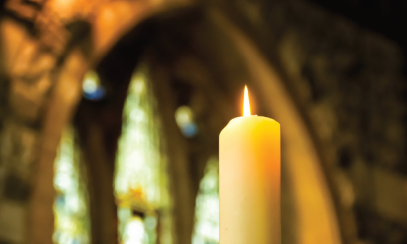Can you be anointed more than once?
Dear Father Joe: What is the difference between the sacrament of the sick and last rites? I thought you could only be anointed once.
A: Let’s get right after it …
Before the Second Vatican Council, there was (as far as I can tell) no difference between the anointing of the sick and last rites. During that time, one was only anointed when the danger of death was very real and, because of that, priests tended to wait until “the last minute” to celebrate the sacrament. In Vatican II, the Church separated these two ideas into the sacrament of the sick and what we call “last rites.”
The ritual for the sacrament of anointing the sick instructs the priest that this sacrament is for those people “whose health is seriously impaired by sickness or old age.” It goes on to tell us that we shouldn’t delay in offering it, particularly to those who ask for it “at the beginning of a serious illness.”
When we anoint the sick, our catechism tells us that five things happen:
First, the sick person’s sufferings are united to the Passion of Christ for the good of the person and of the whole Church. This is important for us. Our Church is always about the holy task of reminding us that we are never alone: we are a part of the body of Christ and, although we may not always feel it, whatever happens to one of us affects us all. When you and I suffer, we are invited to unite those sufferings with Jesus and help him save the world. We recognize, then, that when we feel sick or are limited in what we can do because of our sickness, our mission “shifts” to prayerful support for the Body of Christ that is the Church. You are not just suffering, you are joining your suffering to Christ and building up his body.
Second, the person who is anointed will be given strength, peace and courage to help them endure their sufferings in a Christian manner. Dr. Peter Kreeft once described physical pain as “a jealous tyrant with a whip commanding all our attention at every moment, shouting ‘look at me! look at me!’” To deal with such a thing is difficult and we don’t help ourselves by falling into one of two extremes: either making sure everyone knows our pain and seeking pity or comparing our pain to the pain of others and chastising ourselves for not liking it. Christians respond to suffering by imitating Jesus: we acknowledge the hurt and invite our God into it. We say “Jesus, I join my sufferings to yours” and trust that, whatever we may feel, Christ has joined our sufferings to his and good is happening as a result.
Third, if the sick person was not able to get to confession, their sins are forgiven in this sacrament. Sometimes, through circumstances beyond our control, we are not able to get to the sacrament of reconciliation and we find ourselves in a hospital or laid up with illness. In those cases, the sacrament of the sick can and should serve as an opportunity to rectify that.
Fourth, the sick person is led to the healing of their soul, “but also of the body if such is God’s will.” (CCC 1520) This can be the tough one. It’s very easy to remember that physical pain is a real struggle for us, and it’s also easy to forget that, for Jesus, our spiritual healing is of primary import. I genuinely believe that we are so used to our spiritual wounds that we don’t often identify them as painful. When we receive the sacrament of anointing of the sick, we can trust that God is healing our spiritual wounds and that he will heal our physical wounds, if that is his will. We have to remember that, for lack of a better phrase, God is “in it for the long haul.” God is less interested in saving us from a short time of physical pain if it will strengthen and heal us and others spiritually. His goal for you and me is heaven and, if getting there involves us experiencing physical pain, he loves us enough to allow that. This, in and of itself, is a nuanced point that I’ve addressed a lot in the past.
For the fifth point, we see the difference between the sacrament of the sick and what is commonly called last rites. On this topic, nothing says it better than the catechism. Let’s check out section 1523:
“If the sacrament of anointing of the sick is given to all who suffer from serious illness and infirmity, even more rightly is it given to those at the point of departing this life; so it is also called sacramentum exeuntium (the sacrament of those departing). The Anointing of the Sick completes our conformity to the death and Resurrection of Christ, just as Baptism began it. It completes the holy anointings that mark the whole Christian life: that of Baptism which sealed the new life in us, and that of Confirmation which strengthened us for the combat of this life. This last anointing fortifies the end of our earthly life like a solid rampart for the final struggles before entering the Father’s house.
In this, we see that the fifth point is what separates the anointing of the sick from the last rites. The prayers are different and the actions with the prayers are different. Instead of praying for healing of body and soul, we are commending the person to the intercession of the saints and the hands of our loving God.
So, that walks us through some of the beauty and wonder of God meeting us in every circumstance and situation in our lives. May we always trust his love and his presence.
Enjoy another day in God’s presence.



